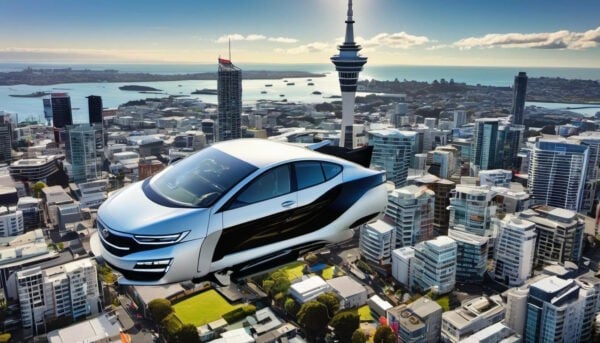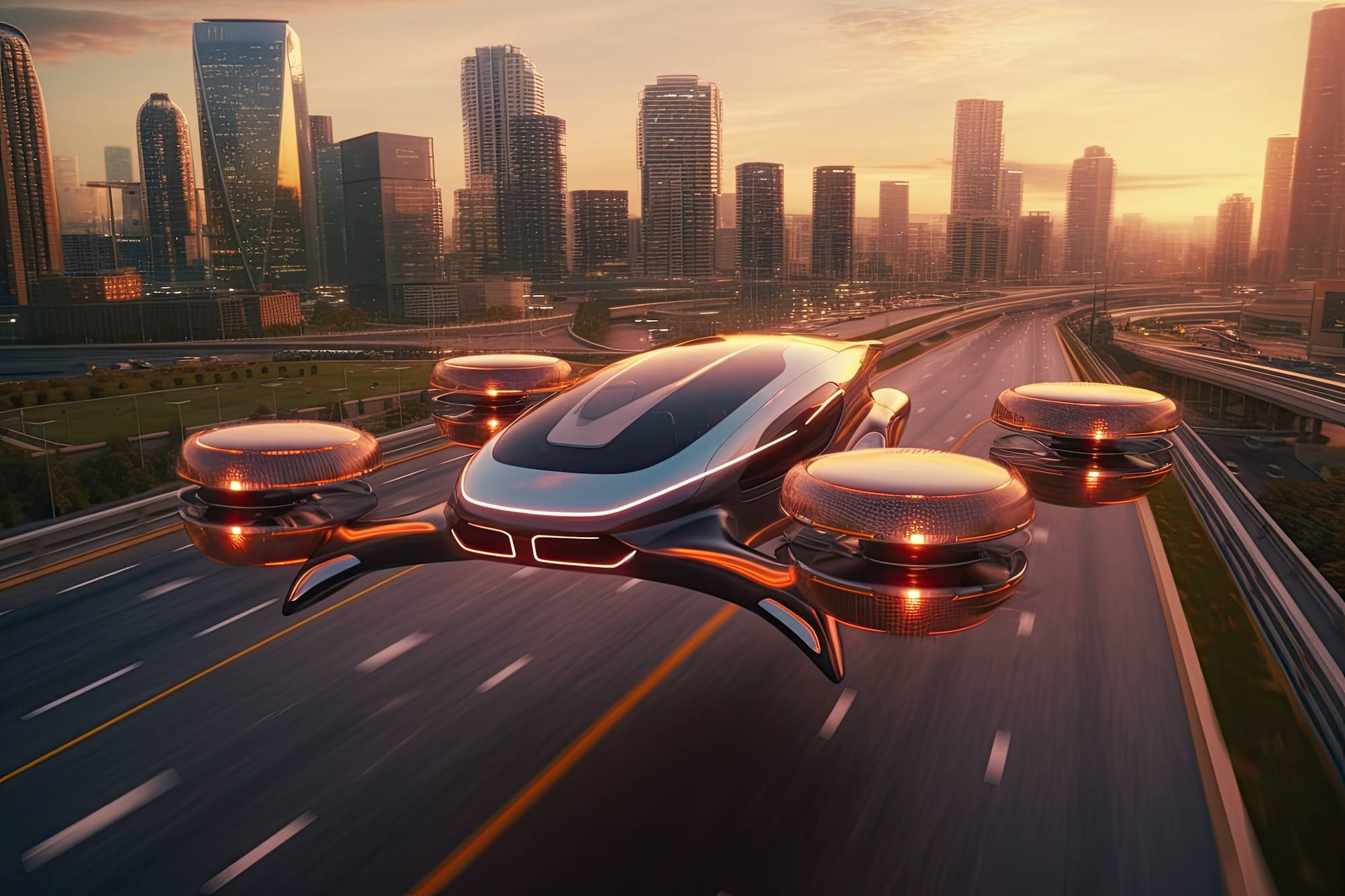Permitting flying cars to New Zealand would generate some significant changes, both positive and negative. New Zealand is a relatively sparsely populated country that is mostly urbanised. It has some difficult terrain with a mountain range running from the bottom of the South Island to the northeast of the North Island. Road conditions are variable and there are still many unsealed roads, or winding, narrow single-lane tarmac roads with plenty of potholes, plus the risk of wandering stock and poor mobile phone reception.
Would it be a transport revolution?
Flying cars would revolutionise transportation in New Zealand, offering faster and more direct routes between cities and regions. This could potentially alleviate congestion on roads and reduce travel times, especially in areas with challenging terrain, or areas that experience significant rush hour congestion (e.g. most arterial routes into Auckland). Rather than spending 1.5 hours driving from Kumeu to Auckland centre in rush hour, the journey, which is only 20 km as the crow flies, could theoretically be done in 15-30 minutes.

Rural access
Remote and rural areas that are currently difficult to access could become more reachable with flying cars, improving access to services and opportunities for those communities. This would have been particularly useful in the floods in 2023 that cut off a large portion of the East Cape by wiping out bridges and roads.
Impacts could include better healthcare options. For example, doctors and midwives would be significantly closer in terms of access time.
Tourism
Flying cars could open up new possibilities for tourism, allowing visitors to explore New Zealand’s stunning landscapes from a unique perspective. This could lead to increased tourism revenue and job opportunities in related industries.
It could also lead to negative tourist consequences as previously inaccessible regions become too accessible, putting pressure on resources and services.
Infrastructure
Introducing flying cars would require significant infrastructure investment, including developing landing pads and air traffic management systems. This could be a challenge, particularly in densely populated urban areas, unless all flying cars were vertical take-off and landing vehicles (for example, similar to drone technology). However, flying cars could reduce the need to build other roading infrastructure due to reducing traffic volumes during rush hour.

New showrooms with a means to test the vehicles would be established. Given the dangers, these are less likely to be in city centres.
Safety
Other services may need to be increased such as air traffic control, observation towers, emergency landing areas and safety infrastructure. There may be the risk of sabotage of some infrastructure.
Flying cars would bring new safety concerns, including the risk of mid-air collisions and the need for rigorous training and regulation for pilots, unless technology increased to a point which could incorporate collision avoidance between flying vehicles. There would still be the requirement to keep regular air traffic separate from flying cars; flying cars might be excluded from flight paths of conventional aircraft, plus from within a certain area around airports.
Ensuring the safety of both passengers and bystanders would be a top priority.
Environmental concerns
Depending on the technology used, flying cars could either reduce or increase environmental impact. Electric or hybrid models would be more environmentally friendly than traditional fuel-powered aircraft, but increased air traffic could lead to noise pollution and concerns about wildlife disturbance.
Crashes could damage sensitive ecosystems. Areas of significant natural beauty could be damaged or polluted if there are no controls to keep vehicles out of them.
Theft
The security of flying cars would need to be tight as, in unauthorised hands, they would arguably be more dangerous than a stolen car. They would also be harder to apprehend given that they are not constrained to a road. They could be easily flown out of the sight of traffic cameras and under the height of radar, then hidden, unless they have some kind of tracking system.
Social equity
Access to flying cars could exacerbate existing inequalities, as they would likely be expensive to own and operate. Ensuring equitable access to this technology would be essential to prevent widening socio-economic divides.
Training and licensing
Would a flying car ‘driver’ require a pilot’s licence, or would it be a requirement that flying cars should be fundamentally autonomous? There would be a market for driver training.
Legislation
Some legislation may need to be created, especially in relation to what constitutes a flying car vs other forms of air transport like helicopters and light aircraft. Legal liability would have to be determined in the event of crashes, and insurance companies would need to be comfortable with the risks.
Conclusion
Overall, while flying cars could offer exciting possibilities for New Zealand for transportation and tourism, careful planning and regulation would be necessary to manage the challenges and ensure that the benefits are shared equitably across society. Niche applications are likely first, such as for doctors, emergency response and police, plus rich person playthings. However, over time, wider adoption would occur as costs come down and safety improves.

